Living in an apartment doesn’t mean you have to miss out on the joys of having a furry friend! In fact, some dogs seem almost tailor-made for smaller living spaces—quiet, cozy, and compact.
Whether you’re a first-time dog owner or looking to add a new member to your urban family, choosing the right breed can make all the difference in your daily life together.
So, if you’re ready to meet some breeds that might just be the perfect match for your lifestyle, keep reading. I promise you’ll find some adorable contenders that are sure to be big on affection and low on space requirements!
Best Small Dogs for Apartments
The Cavalier King Charles Spaniel: The Royal Favorite

With eyes that could melt even the coldest heart and a demeanor as sweet as pie, the Cavalier King Charles Spaniel is the quintessential lap dog. Perfect for apartment dwellers, these pups will make your small space feel like a royal palace. Who needs room to roam when you’ve got a throne to lounge on?
- Lifespan: 12 – 15 years.
- Health Watch: Their regal bloodline comes with some health risks, including hip dysplasia, patella luxation, MVD, and syringomyelia.
- Pros & Cons: They’re affectionate and easy to train but owning one can lead to high veterinary costs and emotional distress due to their potential health issues.
- Fun Facts & More: Cavaliers were named after King Charles II of England, who was so fond of his spaniels that he rarely went anywhere without them. They are renowned for their ability to adapt to various living situations and their love for snuggling on laps, making them quintessential companions for apartment dwellers.
The Pomeranian: The Tiny, Vivacious Companion
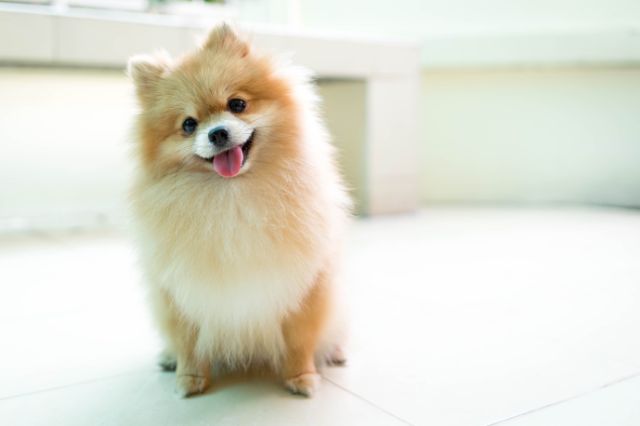
This tiny fluff ball packs a personality ten times its size. Pomeranians are the life of the party, and they bring that party right into your apartment. They’re all about snuggles and playtime. Just remember, they think they’re bigger than they are, so watch out for that bold bark at the mailman!
- Lifespan: 12 – 16 years.
- Health Watch: Watch for dental issues and tracheal collapse.
- Pros & Cons: Pomeranians are active and curious, needing regular interaction and stimulation. They can be vocal, which might require some training to manage.
- Fun Facts & More: Despite their small size, Pomeranians have a big dog attitude and were once bred as larger sled dogs in the Arctic. They were made popular by royalty, including Queen Victoria, who had a particularly small Pomeranian, which then made the smaller-sized Pom more desirable. Known for their fluffy coats and fox-like expressions, they are both bold and lovable.
The French Bulldog: The Charmer of the Apartment World
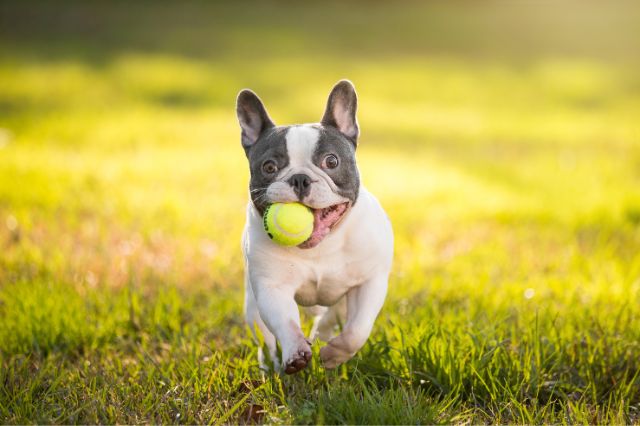
Frenchies are like that cool little buddy perfect for your apartment life’s sitcom. They’ve got those adorable bat ears that hear all the gossip but prefer to stay out of drama. Compact, muscular, and full of personality, they’ll ensure your lap—and your heart—is never empty.
- Lifespan: 10 – 12 years.
- Health Watch: Prone to breathing problems and joint diseases.
- Pros & Cons: French Bulldogs require little exercise but are known for their stubborn streak in training.
- Fun Facts & More: Despite their name, French Bulldogs were actually developed in England as miniature bulldogs and gained popularity among lace workers in France. They’re known for their laid-back attitude and minimal barking, making them perfect for apartment life and for owners who appreciate a quieter dog.
The Bichon Frise: A Tiny Bundle of Joy

Bichon Frises are small, they’re hypoallergenic, and they’re always up for a cuddle. Perfect for indoors, these little bundles of joy will fill your space with their boundless energy and infectious smiles. With a Bichon around, you wouldn’t need a TV—their lively antics are show enough.
- Lifespan: 14 – 15 years.
- Health Watch: Keep an eye out for allergies and joint issues like hip dysplasia.
- Pros & Cons: Love a dog that’s all smiles and wags? That’s your Bichon. They’re great with kids and pets but remember, grooming and potty training can be a bit of a project.
- Fun Facts & More: Originating from France, Bichons have a storied history of accompanying royalty and even taking the stage as circus performers! Their fluffy coats and cheerful dispositions made them a hit in both courts and street performances. Ideal for those who work from home, as they thrive on companionship and can struggle with separation anxiety.
The English Bulldog: Surprisingly Apt for Apartments
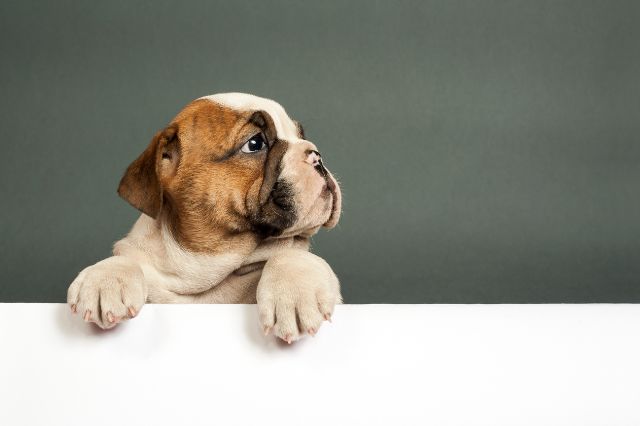
Don’t let that grumpy face fool you; English Bulldogs are the teddy bears of the dog world. They’re content to sprawl anywhere in your apartment, preferably in a cool spot or, better yet, on your lap. And yes, they snore louder than your granddad but with more rhythm!
- Lifespan: 8 – 10 years.
- Health Watch: Be prepared for significant health care, from respiratory issues to joint care.
- Pros & Cons: They’re loving and low-energy but require diligent care and attention to their health needs.
- Fun Facts & More: Despite their somewhat somber appearance, English Bulldogs are known for their gentle disposition and courageous nature. Originally bred for bull-baiting, today’s Bulldogs are more lovers than fighters. They’re particularly popular for their distinctive looks and have been mascots for numerous universities and even the U.S. Marine Corps.
The Chihuahua: Big Personality in a Petite Package
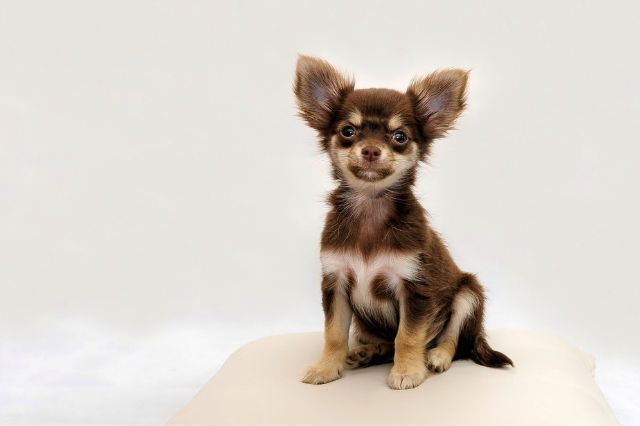
Don’t let their tiny size fool you; Chihuahuas pack a lot of punch into their petite frames. They’re the perfect size for a cozy apartment and make excellent watchdogs—barking at anything from a loud noise to a suspicious shadow. Just remember, they’re big dogs trapped in small bodies and they have the ego to match.
- Lifespan: 14 – 16 years.
- Health Watch: Watch for dental issues and hypoglycemia.
- Pros & Cons: These little dynamos need minimal exercise but thrive on your undivided attention. They’re not fans of sharing the spotlight with other pets or young kids, though!
- Fun Facts & More: Despite their small stature, Chihuahuas are believed to descend from an ancient dog breed called the Techichi, treasured by the Toltec civilization in Mexico. They can come in a variety of coat types and colors, and are often seen sporting trendy outfits that protect them from the cold.
The Dachshund: The Adventurous Weiner
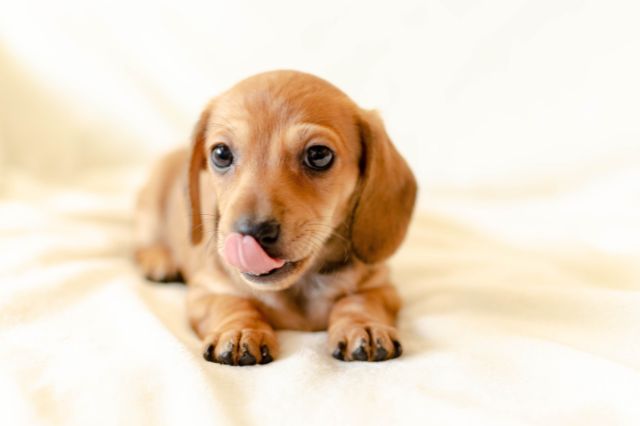
Who says you can’t fit a sports car in a tiny garage? Dachshunds, with their long bodies and short legs, are like the sports cars of the dog world: compact, speedy, and a bit too confident in tight spaces. They’re always up for a game of fetch in your living room hallway.
- Lifespan: 12 – 16 years.
- Health Watch: Their long bodies are prone to spinal issues, so keep them active but careful.
- Pros & Cons: Great with families, though their barking might need managing. They’re also known for being stubborn!
- Fun Facts & More: Dachshunds were originally bred in Germany to hunt badgers, thanks to their long, narrow build. Today, they channel their tenacity into playful games and are known for their brave and sometimes comical behavior. Their variety in coat types—smooth, wirehaired, or longhaired—offers something for every taste.
The Shih Tzu: The Snuggly Companion
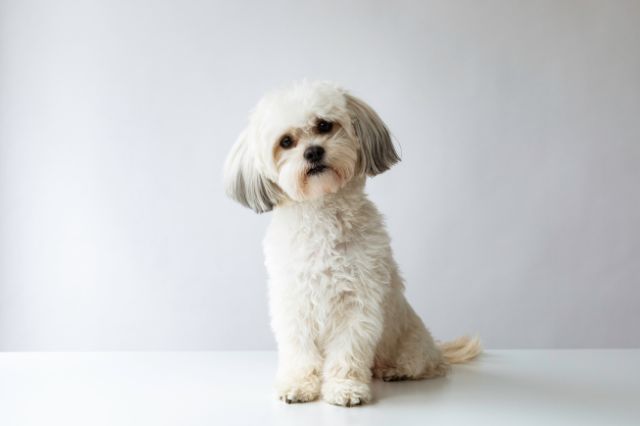
Shih Tzus are the snuggle champions of the small dog world. Quiet and affectionate, they’re just as happy to watch TV all day as they are to be cuddled. Perfect for apartment dwellers who want a furry friend that’s low on noise but high on love.
- Lifespan: 10 – 18 years.
- Health Watch: Their adorable faces come with a risk of respiratory and eye issues.
- Pros & Cons: Low exercise needs but watch out for jealousy if there are other pets around.
- Fun Facts & More: The name “Shih Tzu” translates to “little lion,” though there’s nothing fierce about these dogs. Originating from Tibet, they were bred to resemble lions, which are a symbol of Buddhist mythology. Shih Tzus are well-known for their luxurious coat and proud bearing, and they have a history as pets to Chinese royalty.
The Toy Poodle: Small but Mighty

Smart and agile, Toy Poodles are fantastic for those who enjoy an active, yet small-sized companion. They’re like having a miniature Einstein at home—always ready for a puzzle or a quick learning game. And let’s be honest, they probably have a better haircare routine than most of us!
- Lifespan: 10 – 18 years.
- Health Watch: Keep an eye out for hereditary disorders like epilepsy and hip dysplasia.
- Pros & Cons: Toy Poodles are bright and quick to learn, making training a breeze. However, their intelligence means they need mental stimulation to avoid boredom.
- Fun Facts & More: Originating in Germany as duck hunters, Toy Poodles are actually a scaled-down version of the Standard Poodle, bred specifically to be companions. They excel in obedience and agility sports and are known for their hypoallergenic coats, which makes them a great choice for allergy sufferers. Their sophisticated appearance has made them a favorite in French circuses!
The Miniature Pinscher: The King of Toys
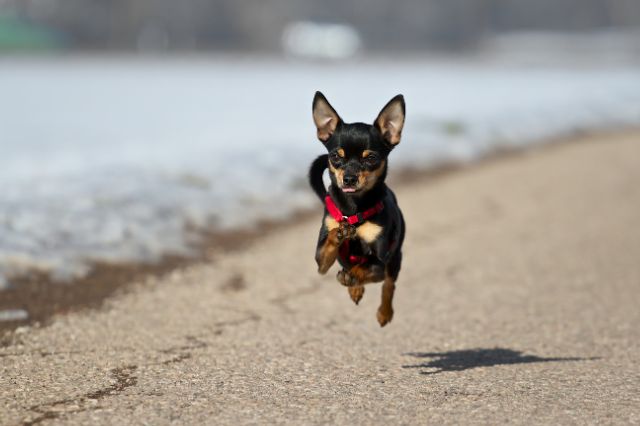
Miniature Pinschers are the self-appointed kings and queens of their domains. They might be small, but their attitude could fill a palace. Fearless and energetic, they keep life interesting—and who needs a doorbell when your MinPin can alert you to every leaf that blows past your apartment?
- Lifespan: 12 – 16 years.
- Health Watch: Watch for issues like patellar luxation and Legg-Perthes disease.
- Pros & Cons: MinPins are fearless and energetic, needing regular exercise to match their high spirits. They can be great watchdogs but might challenge an inexperienced owner.
- Fun Facts & More: The Miniature Pinscher is not actually a miniature version of the Doberman but is a breed of its own with roots in Germany. Known for their high-stepping ‘hackney’ gait, MinPins are lively and assertive, often ruling the roost despite their small size. Their fearless nature and boundless energy make them entertaining but demanding pets.
The Pembroke Welsh Corgi: A Royal Delight
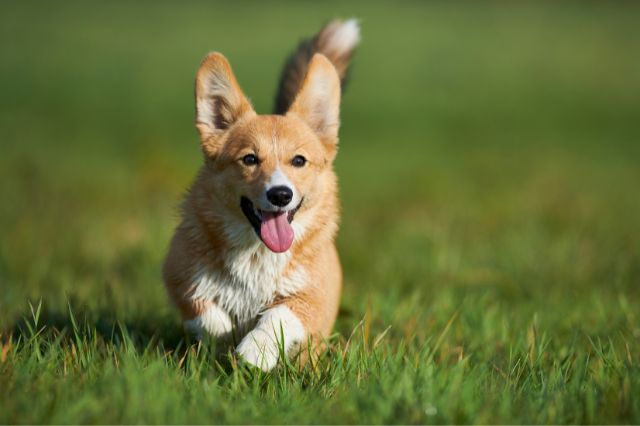
Corgis might have short legs, but they’re long on personality. Favored by royalty and commoners alike, these pups bring a bit of regal charm to any space, no matter the size. Plus, who can resist that waddle?
- Lifespan: 12 – 13 years.
- Health Watch: Common issues include hip dysplasia and degenerative myelopathy.
- Pros & Cons: Corgis are intelligent and easy to train, but they do shed a lot and require a good amount of exercise.
- Fun Facts & More: Pembroke Welsh Corgis have been beloved by Queen Elizabeth II for decades, which has contributed to their popularity. Originally bred for herding cattle, they are remarkably agile and active. They are known for their affectionate nature and strong bond with their families, making them excellent companions.
The Yorkshire Terrier: Tiny but Tenacious

Yorkies may be tiny, but they’re mighty in spirit. They carry themselves with a regal air, as if they’re strolling through a Yorkshire manor rather than your one-bedroom apartment. They’re the perfect mix of adventurous and adorable, always ready to strut their stuff on the sidewalk catwalk.
- Lifespan: 11 – 15 years.
- Health Watch: Be aware of dental issues and hypoglycemia.
- Pros & Cons: Yorkies are sensitive, bold, and adventurous, but they can be sensitive too and don’t do great with children. They also require regular grooming to keep their fine, silky hair looking good.
- Fun Facts & More: Originally from England, Yorkshire Terriers were used to catch rats in clothing mills. These days, they’re more likely to be seen sporting stylish outfits and strutting down city streets. They may be tiny, but they’re tough—often acting as fearless protectors of their homes.
The Maltese: The Aristocratic Lapdog

Malteses are like fluffy white clouds floating through your living room. They’ve graced the laps of the elite through the ages, and now they’re ready to grace yours. Calm and cuddly, they make every day a bit more luxurious.
- Lifespan: 12 – 15 years.
- Health Watch: Look out for issues like patellar luxation and heart problems.
- Pros & Cons: Malteses are loving and easygoing, making them perfect for calm households. However, they need regular grooming to maintain their beautiful coats.
- Fun Facts & More: Maltese dogs can be traced back over 2,000 years and have always been companions to the elite. They’re depicted in paintings and writings throughout history, often shown perched regally alongside their noble owners. Despite their plush appearance, they’re sturdy and adaptable dogs.
The Shiba Inu: The Spirited Soul
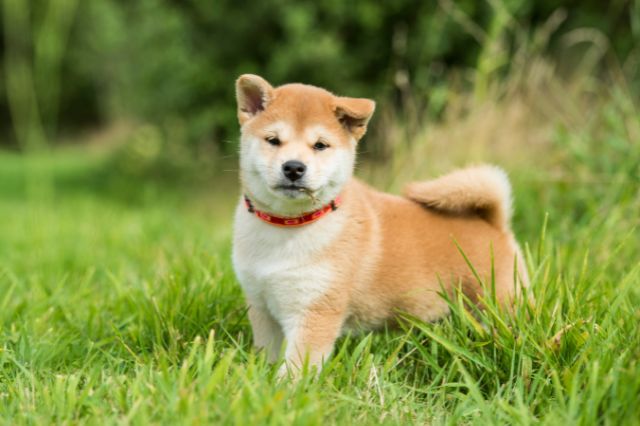
Shibas bring a zest of the wild to your urban jungle with their fox-like looks and independent streak. They might give you a run for your money when it comes to training, but their loyalty and clean habits make them top-notch apartment mates. Just beware of the Shiba scream—it’s as dramatic as it sounds!
- Lifespan: 13 – 16 years.
- Health Watch: Common issues include allergies and hip dysplasia.
- Pros & Cons: Shibas are loyal doggies but they can be independent and reserved, especially with strangers.
- Fun Facts & More: Shibas are one of Japan’s native breeds and were originally used for hunting. They possess a fox-like appearance and are known for their “Shiba scream” — a loud, high-pitched scream they emit when provoked or happy. They’re also known for their fiery personality and cat-like agility and cleanliness.
The Pug: The Clown of the Canine World
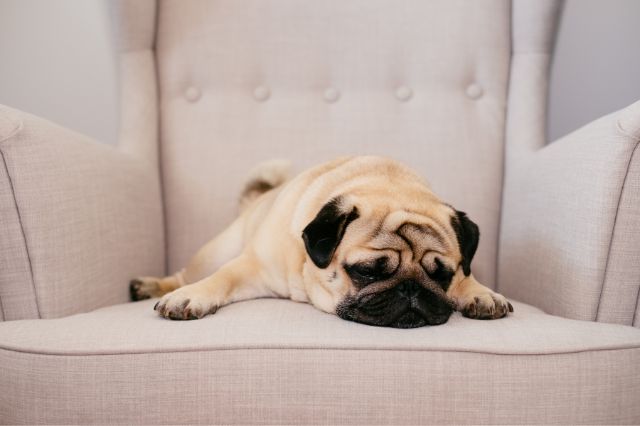
Pugs are nature’s clowns, always ready to bring a smile with their goofy antics and squishy faces. They thrive indoors where they can be the center of attention and make even the smallest space feel like a circus tent.
- Lifespan: 13 – 15 years.
- Health Watch: Keep an eye out for brachycephalic syndrome and joint issues.
- Pros & Cons: Pugs are sociable and gentle but are prone to obesity and need their diet closely managed.
- Fun Facts & More: Pugs were originally bred to sit on the laps of Chinese emperors, and their wrinkles were valued as they resembled good luck symbols in Chinese script. They are natural comedians who love to show off and are known for their ability to get along with just about everyone, including kids and other animals.
